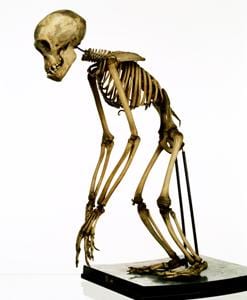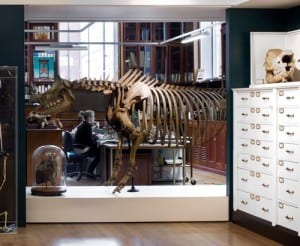Dismantling Reg the Rhino in Ten Easy Steps
By Jack Ashby, on 27 November 2014
On 10th November the Grant Museum team took on the giant task of dismantling the largest specimen in the Museum – our huge (hornless) one-horned rhino skeleton. This is one of the first steps in our massive conservation project Bone Idols: Protecting our Iconic Skeletons (click the link to read more about it and how you can support it).
In this previous post I described the the history of this specimen and what conservation work will be done to this invaluable specimen. We also set a Twitter competition to #NameTheRhino – he shall now be known as Reg. Full details about that at the bottom.
How to take apart a complicated massive skeleton, in ten easy steps.
This was all coordinated by skeleton conservator Nigel Larkin.
1) Label every bone and photograph everything so Nigel knows where to put them when Reg gets rebuilt.
2) Set up a time-lapse camera to record the whole thing:
 Close
Close



